Targeting Biometals in Alzheimer's Disease with Metal Chelating Agents Including Coumarin Derivatives
- PMID: 38829443
- PMCID: PMC11182807
- DOI: 10.1007/s40263-024-01093-0
Targeting Biometals in Alzheimer's Disease with Metal Chelating Agents Including Coumarin Derivatives
Abstract
Numerous physiological processes happening in the human body, including cerebral development and function, require the participation of biometal ions such as iron, copper, and zinc. Their dyshomeostasis may, however, contribute to the onset of Alzheimer's disease (AD) and potentially other neurodegenerative diseases. Chelation of biometal ions is therefore a therapeutic strategy against AD. This review provides a survey of natural and synthetic chelating agents that are or could potentially be used to target the metal hypothesis of AD. Since metal dyshomeostasis is not the only pathological aspect of AD, and the nature of this disorder is very complex and multifactiorial, the most efficient therapeutics should target as many neurotoxic factors as possible. Various coumarin derivatives match this description and apart from being able to chelate metal ions, they exhibit the capacity to inhibit cholinesterases (ChEs) and monoamine oxidase B (MAO-B) while also possessing antioxidant, anti-inflammatory, and numerous other beneficial effects. Compounds based on the coumarin scaffold therefore represent a desirable class of anti-AD therapeutics.
© 2024. The Author(s).
Conflict of interest statement
The authors have no conflicts of interests to declare in relation to the contents of this review.
Figures

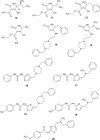
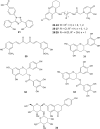

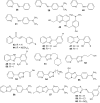
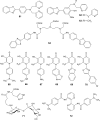

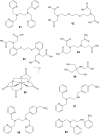




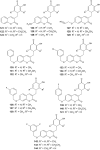
Similar articles
-
Metallobiology and therapeutic chelation of biometals (copper, zinc and iron) in Alzheimer's disease: Limitations, and current and future perspectives.J Trace Elem Med Biol. 2021 Sep;67:126779. doi: 10.1016/j.jtemb.2021.126779. Epub 2021 May 15. J Trace Elem Med Biol. 2021. PMID: 34034029 Review.
-
Management of oxidative stress and other pathologies in Alzheimer's disease.Arch Toxicol. 2019 Sep;93(9):2491-2513. doi: 10.1007/s00204-019-02538-y. Epub 2019 Aug 22. Arch Toxicol. 2019. PMID: 31440798 Review.
-
Multifunctional coumarin derivatives: monoamine oxidase B (MAO-B) inhibition, anti-β-amyloid (Aβ) aggregation and metal chelation properties against Alzheimer's disease.Bioorg Med Chem Lett. 2015 Feb 1;25(3):508-13. doi: 10.1016/j.bmcl.2014.12.034. Epub 2014 Dec 19. Bioorg Med Chem Lett. 2015. PMID: 25542589
-
Rivastigmine-Benzimidazole Hybrids as Promising Multitarget Metal-Modulating Compounds for Potential Treatment of Neurodegenerative Diseases.Int J Mol Sci. 2023 May 5;24(9):8312. doi: 10.3390/ijms24098312. Int J Mol Sci. 2023. PMID: 37176018 Free PMC article.
-
Recent Multi-target Approaches on the Development of Anti- Alzheimer's Agents Integrating Metal Chelation Activity.Curr Med Chem. 2021;28(35):7247-7277. doi: 10.2174/0929867328666210218183032. Curr Med Chem. 2021. PMID: 33602068 Review.
Cited by
-
Mitochondrial dysfunction in the regulation of aging and aging-related diseases.Cell Commun Signal. 2025 Jun 19;23(1):290. doi: 10.1186/s12964-025-02308-7. Cell Commun Signal. 2025. PMID: 40537801 Free PMC article. Review.
-
Homeostasis and metabolism of iron and other metal ions in neurodegenerative diseases.Signal Transduct Target Ther. 2025 Feb 3;10(1):31. doi: 10.1038/s41392-024-02071-0. Signal Transduct Target Ther. 2025. PMID: 39894843 Free PMC article. Review.
-
Neuroprotective Potential of Indole-Based Compounds: A Biochemical Study on Antioxidant Properties and Amyloid Disaggregation in Neuroblastoma Cells.Antioxidants (Basel). 2024 Dec 23;13(12):1585. doi: 10.3390/antiox13121585. Antioxidants (Basel). 2024. PMID: 39765912 Free PMC article.
-
Copper ions: The invisible killer of cardiovascular disease (Review).Mol Med Rep. 2024 Nov;30(5):210. doi: 10.3892/mmr.2024.13334. Epub 2024 Sep 20. Mol Med Rep. 2024. PMID: 39301641 Free PMC article. Review.
-
X-ray Fluorescence Microscopy to Develop Elemental Classifiers and Investigate Elemental Signatures in BALB/c Mouse Intestine a Week after Exposure to 8 Gy of Gamma Rays.Int J Mol Sci. 2024 Sep 24;25(19):10256. doi: 10.3390/ijms251910256. Int J Mol Sci. 2024. PMID: 39408586 Free PMC article.
References
-
- Alzheimer’s Association. 2018 Alzheimer’s disease facts and figures. Alzheimers Dement. 2018. 10.1016/j.jalz.2018.02.001. - PubMed
-
- Santos MA, Chand K, Chaves S. Recent progress in multifunctional metal chelators as potential drugs for Alzheimer’s disease. Coord Chem Rev. 2016 doi: 10.1016/j.ccr.2016.04.013. - DOI
Publication types
MeSH terms
Substances
Grants and funding
LinkOut - more resources
Full Text Sources
Medical

